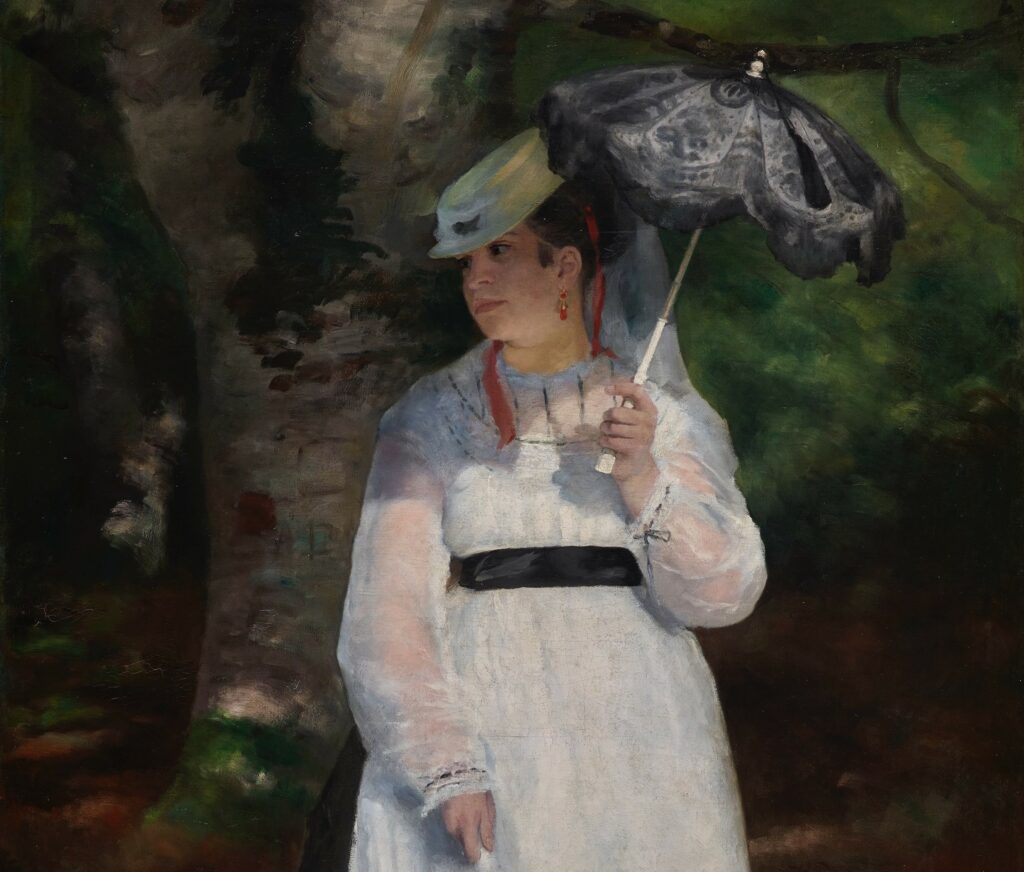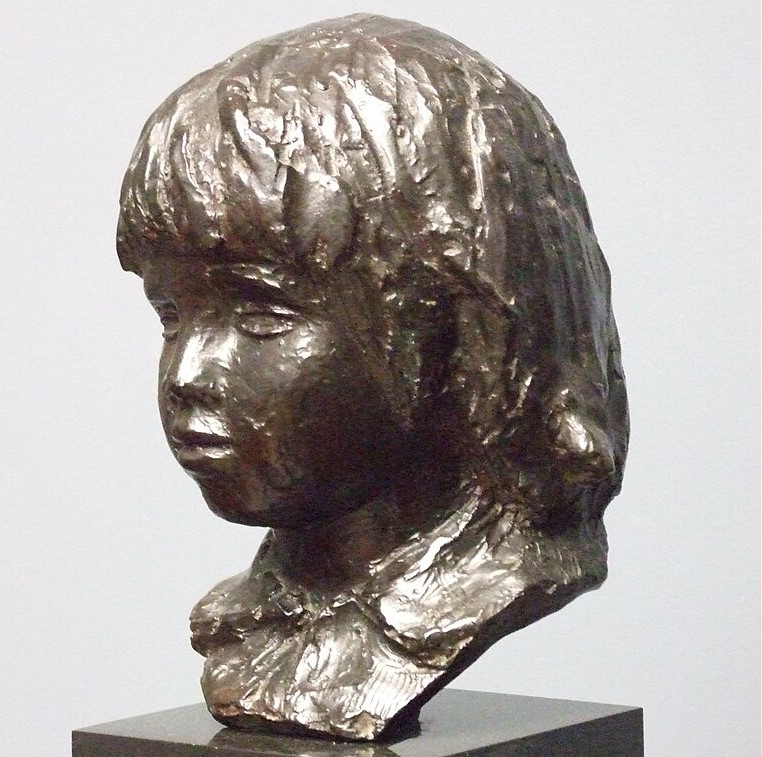"For me, a painting has to be something pleasurable, happy and beautiful, yes, beautiful! There are too many unpleasant things in life as it is to invent more."
These words were spoken by the famous French painter Pierre-Auguste Renoir...105 years since his death. He was one of the pioneers of Impressionism, but his Impressionist works were in a way a continuation of the paintings of the old masters. He was fond of referring to himself as an 18th-century figure, drawing on the great painting tradition of the time. Towards the end of his life, he also took up sculpture and printmaking.
He was nicknamed "the painter of happiness" because his paintings express the joy of life, the optimistic atmosphere of Parisian streets and cafés, as well as the picturesque landscape of the countryside and sunlit nature. "Art is about emotions; if art needs to be explained, it is no longer art," he claimed. "I would never have taken up painting if women didn't have breasts," he proclaimed, and produced a series of portraits and nudes that immortalised the charm of happy girls and the sensual beauty of women. "If I've painted a woman's ass in a way that makes me want to touch it, then the painting is done," He said. The total number of Renoir's works is estimated at 4,000 paintings.
He was born on 25 February 1841 in Limoges, central France, the penultimate of five children in a poor family of a tailor and seamstress. When he was three, the family moved to Paris near the Louvre. Although he had loved to draw since childhood, he seemed to have a greater talent for singing. He was taught by Charles Gounod, who was then choirmaster at St. Roch's Church, where little Auguste sang in the choir. However, due to the family's financial situation, he had to quit music lessons and leave school at the age of 13. He worked as a porcelain painter in a Parisian factory, but was dismissed after four years because he began to paint porcelain using stencils. He then became a painter of theatre sets, fans and curtains. At sixteen he painted the first surviving portrait - of his grandmother.
In 1862, he finally saved his money to study at the École des Beaux-Arts (School of Fine Arts) in Paris. During his studies, he was a frequent visitor to the collections of the Louvre Gallery, where he obtained permission to paint copies. During this time he also attended Charles Gleyre's studio and it was here that he met Alfred Sisley, Frédéric Bazille and Claude Monet. After the studio closed in 1863, they travelled together to Fontainebleau, made famous by the landscape painters of the Barbizon School. Here they began to paint in nature and created a new artistic movement - Impressionism.

But for Renoir, unlike Monet, the human figure was important, and he tried to connect it naturally to the landscape or interior. He had his first success at the Paris Salon in 1868 with his painting Lisa with umbrellaon which he painted his then lover, with whom he had two children, a son Pierre and a daughter Jeanne. The painting provoked enthusiastic comments from the young critic Émile Zola, but general recognition was slow in coming. In a difficult financial situation, Renoir lived with his parents for a time, and Lisa married. After a brief period of military service during the Franco-Prussian War, Renoir returned to Paris in 1871.

He created his own unique and distinctive style, for which he was often condemned, both by official art and by his Impressionist friends. Unlike them, however, he was already selling his canvases. In 1876 he rented a studio in Montmartre, which became a museum in 1960.
For financial reasons, he devoted himself mainly to painting portraits, which he obtained thanks to his supporters, the Charpetiers. At the same time, however, he also produced his greatest works of the classical period. These include Dancing at the Moulin de la Galette, Swing, Breakfast, Rowers from Chatou a Rowers' breakfast.
One of Renoir's most famous and best-loved Impressionist paintings, Dancing at the Moulin de la Galette, depicting a joyful dance party in Montmartre, was painted in 1876 and painted by the artist in a dance hall.

In the picture Rowers' breakfast from 1881, Renoir's new model, later lover and wife, Aline Victorine Charigot, 18 years his junior, first appeared as a girl holding a dog in her arms.

In 1881, Renoir went on a journey, visiting Spain, where he studied the works of the Spanish painter Velázquez, then Italy, where he was particularly interested in the works of Raphael and Titian, and Sicily, where he met Richard Wagner, whom he reportedly painted a portrait of in just thirty-five minutes. He travelled twice to Algeria in search of the exotic subjects made famous 50 years earlier by Eugène Delacroix. But Muslim women refused to pose for him, so he hired French women and dressed them in native costumes.
After his return, he fell into an artistic crisis, intensified by his travel experiences. He was looking for a new style and inspiration: "Around 1883 there was a break in my work. I had gone as far as I could with Impressionism, and I realized that I could neither paint nor draw. In a word, I was at an impasse." He moved away from impressionism and focused on drawing, shape and composition. The turn to classicism is evident in the painting Dance in the countryside (1883) from a series of three dance paintings, where the model is again Aline. One of the main motifs in his work at the time was the female nude, as in the painting Big swimming (1884).

In April 1890 he married Aline, with whom he had been living since 1881, and they had a son Pierre (1885-1952), who became a well-known stage and film actor. His second son Jean (1894-1979) later became a film director and his third son Claude (1901-1969) was a ceramist.
Renoir fell in love with the village of Essoyes in the Champagne region, where his wife came from. In 1896 he bought a house there, where he built a studio and concentrated on themes of family and ordinary human life. He often painted his own garden or portrayed his children and their caregiver Gabrielle Renard (paintings Motherhood, Gabrielle in a ruffled blouse or Rest after the bath). He shunned the bohemian life, also because he suffered from severe rheumatism.
In 1900 he was awarded the Order of the Legion of Honour. In 1903 he moved with his family to Cagnes-sur-Mer, near Nice, because the climate was favourable to his health. For ten years he had been suffering from rheumatoid arthritis, which caused his general paralysis. In 1907 he bought a house there, where he had a studio and which is now the Renoir Museum.

As the disease progressed, he could no longer hold the palette and kept the brush tied to his fingers. "The pain will pass, but the beauty will remain," commented on his difficulties. Gradually he was confined to a wheelchair and was no longer able to paint on traditional canvases. He therefore turned to sculpture, but had to leave the realisation of his designs to others. The only sculpture he created with his own hands was a bust of his youngest son Claude in 1908. From 1913 onwards, he was also involved in printmaking, etchings and lithographs. By that time he was already a world-famous artist and his paintings were selling for ever higher prices.

The sudden death of Aline, who died of a heart attack in June 1915, weighed heavily on him. His sons Pierre and Jean were severely wounded during the First World War, but survived. Towards the end of his life, in 1919, Renoir visited the Louvre in a wheelchair, where his painting was exhibited Mrs. Charpentier and her children next to the paintings of the old masters. He died at his estate on the Côte d'Azur on 3 December 1919 at the age of 78 of pneumonia. He is buried in the Essoyes cemetery with his wife and sons.
Gnews.cz / wikipedia / Jana Černá



